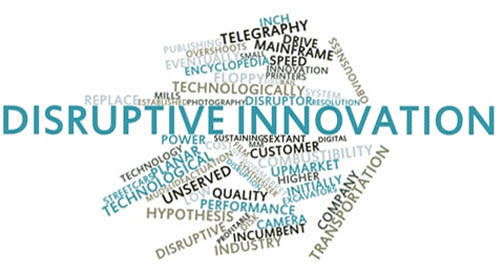Fossil-free fuel from carbon dioxide? Check.
Bear with me–this is another Audi-related post. However, it’s about what fuels the cars on our roads rather than Audi’s autonomous driving innovations. In a press release by Volkswagen AG, Audi announced today that they have successfully produced their first batch of e-diesel and it has been put to use in Germany’s Federal Minister of Education and Research, Dr. Johanna Wanka’s, government-issued Audi A8 TDI. That’s great–but what does the term “e-diesel” even mean? E-diesel is a type of fuel researched heavily by Audi that is synthesized from existing atmospheric carbon dioxide, water and electricity from wind and solar sources. In short, there are no fossil fuels of any type used in the production of Audi’s e-diesel. When I read this, I began thinking of ramifications for other industries that e-diesel (once it’s ready for mass consumption) might disrupt. First, and most obviously, fossil fuel and oil giants like BP and Shell will surely try to squash this new eco-friendly superfuel because it doesn’t need any input from their giant conglomerates to power millions of diesel cars around the world. Next, I think government’s will be disrupted because of new testing that will be necessary, tax credits that might incentivize the use of e-diesel that will need to be rolled out, etc. Can you think of any other industries that might be disrupted by Audi’s innovative new fuel? Are their applications other than automobiles that the fuel might excel in?
How To Drive Enterprise Collaboration
Earlier this week someone posted an article about why CIOs can’t sell enterprise collaboration tools and today I saw an article where IT leaders gave tips on how to drive enterprise collaboration and ensure its success. The IT leaders said the most common reason for CIOs having difficulty with enterprise collaboration is that they pursue solutions to problems that don’t exist.
Some of the tips given in the article included getting insight from employees and making sure they are invested in the selection process. They also said to CIOs should look for collaboration tools that require little training it will generally be adopted faster by more employees. Some IT leaders said gamification was the key to adoption because it provides incentives for employees to use the new collaboration tools. Other IT leaders said they use “the art of seduction” by creating collaborative tools that the user clearly sees as superior to previous tools or practices. Therefore, there is no need to drive adoption because users are already willing to adopt to a better solution.
Which tip do you think is most important in driving enterprise collaboration? In your internship or work experience, how have IT leaders tried to drive enterprise collaboration? Did it work?
Four Unconventional Ways To Tell If Your Workplace Culture Is Toxic
 With graduation around the corner, many students are willing to take any job they can get. Many are ignoring the important factor of culture in the workplace. If you do not mesh well with the culture of your company, it is going to make your attitude towards work suffer. In this Forbes article, author Maureen Henderson shares some tips on how to tell if the culture you dove into is actually toxic.
With graduation around the corner, many students are willing to take any job they can get. Many are ignoring the important factor of culture in the workplace. If you do not mesh well with the culture of your company, it is going to make your attitude towards work suffer. In this Forbes article, author Maureen Henderson shares some tips on how to tell if the culture you dove into is actually toxic.
– Employees spending time with each other outside of the workplace to bond is a great sign that it is easy to get along with your co-workers.
– Noticing people’s reactions to entering and leaving the office will determine weather or not they enjoy spending 40 hours a week there.
– If co-workers support each other with non-work context. For example, do other co-workers buy Girl Scout cookies to help out a co-workers daughter? (I’m not sure if anyone, toxic or not, could turn down Girl Scout cookies)
While looking for jobs are you interested in the companies culture to make sure you’ll fit in?
Do you feel as though it is imperative you fit into your companies culture? Or is clocking in, working, and clocking out enough for you?
http://www.forbes.com/sites/jmaureenhenderson/2015/04/21/four-unconventional-ways-to-tell-if-your-workplace-culture-is-toxic/2/
The Top 5 Disruptive Technologies of 2014

An Investor’s Guide to Disruptive Innovation
In this article, Jason Stutman talks about the 5 most disruptive technologies of last year and touches on some of the industries that they will disrupt. Some of which we have discussed in class. He lists that Additive Manufacturing, The Automated World, The Internet of Things, Next Generation Interface, and Next Generation Genomics are the five most disruptive technologies. Additive Manufacturing is the process of buiilding three-dimensional objects with machines using CAD software (3D Printing). This is disrupting manufacturing as a whole because it can literally make anything and results in less waste, faster output, and lower operational costs. Automated World is what its title suggests, automation. This technology could disrupt the job market and affect areas such as automated retail, advanced robotics, and artificial intelligence. The Internet of Things is the concept of everyday objects becoming connected to the web. This disruptive technology is directly tied to the automated world. Next Generation Interface refers to the fact that our devices become smaller and smaller that we will need a new means on interaction with them. Lastly, Next Generation Genomics refers to treatment based on genetic sequencing rather than symptoms. All of these are disruptive based on facts sited in the article. What technologies will be considered the most disruptive for 2015?
Making An Effective Presentation

Making An Effective Presentation
In this Forbes article, author Bill Rosenthal explains the three main components to delivering a successful and effective presentation. He first highlights that the three most important parts to any presentation is: (1) making an emotional connection with the audience, (2) present with energy, and (3) spell out the payoff for the audience. Rosenthal states that conciously or not, an audience forms a bias for or against a presenter within seconds. The key to this step is ensuring that you come across as likale and trustworthy. He says that the key to being likable is simple: show you like the audience and they will reciprocate, and once that is acheived, the trust will come. The next step is to present with energy. Rosenthal states that the way to get the audience excited about your presentation is by showing them your own excitement. The last step is spelling out the payoff for the audience. Rosenthal states that you should never assume that the audience will understand the take away as quickly as you, the presenter, has. He says that you need to state your key facts and then reiterate them in different ways so that they can sink in. Seeing as how we are all going to be giving presentations on our projects, I felt that this article could be helpful. Can you think of any other techniques that you can use to incorporate Rosenthal’s three key components within your own presentations?
Rocket maker for NASA and the Air Force to begin 3D printing parts
United Launch Alliance (ULA), who makes rockets for NASA and the Air Force, is planning to 3D print 100 parts for the next-gen model of its Vulcan rocket, which is expected to launch in 2019. Rockets cost about $165 million for ULA, and 3D printers are expected to save as much as $1 million per year in manufacturing costs. Creating these parts in house with 3D printing allows ULA to maintain internal quality control without having to deal with other companies. ULA has previously used 3D printing to make molds and guides, but has not used it to make parts before. Additionally, the company expects to use 3D printing for “rapid prototyping of parts.” This allows engineers to test a part for functionality before having to go through production or deal with a supplier.
Would you expect 3D printing to be adopted in something like rocket manufacturing?
What other manufacturers do you think could benefit from 3D printing parts?
3 Questions on Killer Robots
Since fully autonomous weapons don’t yet exist, why isn’t a ban premature?
Although fully autonomous weapons are not in the market at this time, national- security experts are saying countries will be looking at this as the next step in warfare technology. These experts believe that any fully autonomous weapons should be banned before any developing begins. Concerns around these weapons are rising because of the intense threats it brings to society.
Isn’t it difficult to define a “fully autonomous” weapon?
The article explains it as a weapon who could kill a target without any human input. They also explain the difficulties of not having an explanation. If anyone were to ban a weapon that is “fully autonomous” a definition would first need to be explained, along with a broad range of violations because people may look to get around the exact definition of the weapon.
In addition to the errors that could lead an autonomous weapon to kill civilians, what are some of the novel legal problems they could cause?
Who would even be responsible for an error? The chain of commands could lead all the way back to the manufacturer. Which under the current law no one would be at fault.
Are these weapons something that could be implemented? What types of effects could it have on society as a whole?
http://www.technologyreview.com/news/536881/3-questions-on-killer-robots/
Affordable 3D Printing May Be Just Around the Corner

Earlier in the semester when I gave a presentation on 3D printing, I suggested that Consumer 3D Printing won’t be mainstream for another 5-10 years. Well, it looks like it may be here sooner than expected. A team of engineers recently set out to develop a cheap, high-quality consumer 3D printer. With their product, named Tiko, they did just that. Tiko is a 3D printer that is easy to use, non-proprietary, accurate, Wi-Fi enabled, and even comes with its own software to design 3D models on (and be sent right to the printer) — and you can get one for a $179 pledge! This piqued a lot (well, several) peoples’ interest. The group of engineers created a Kickstarter campaign with the goal of raising $100,000 in order to further develop and mass produce the printer. As of now, with 10 days left in the campaign, $2,251,129 has been pledged by 12,663 backers — that is around 178x what they asked for.
As the Kickstarter campaign shows, there is a lot of interest in consumer 3D printing. With Tiko, it looks like it may soon be a reality. I personally think a product like Tiko can make a huge impact, especially in the toy industry. As I mentioned a lot in more presentation earlier in the semester, I think that a company like LEGO should be concerned by the arrival of product like Tiko. If I had one, for example, I could print all of the LEGO pieces that I want, and for much cheaper than buying actual LEGO sets.
What do you guys think, though? Do you guys think this could make a significant impact in the consumer industry, or is it still too early for consumer 3D printing to enter the mainstream market? Let me know what you think!
The Most Toxic Types of People to Avoid at Work
As a majority of us are graduating this semester and moving into the workplace, I found this article to be very interesting and helpful in that we absolutely do not want to be one of those people who others should avoid and look down to. It is imperative that as entry level employees we are very perky and willing to learn as much as possible. Keeping an open mind and being flexible are two of the most important attributes that we all must contribute to wherever we decide to work. Considering our low levels of experience, and the big companies some of us will be working for very soon, there will most definitely be a lot of learning to do. Learning entails keeping our heads us and with our eyes and ears open to whatever anyone is saying to us. It will be easy to get bogged down by other employees who maybe have been there for a while and somewhat grown into disliking their work. Some of the most helpful tips I read to steer away from these kind of people are included in the following:
Constant complainer. Negativity is draining and depressing, both for the person complaining and those around him or her. While there are certainly plenty of legitimate issues one might complain about at work, beware of people who seem perpetually dissatisfied and are constantly kvetching about issues at work that can’t be changed.
Boundaryless BFF. It’s nice to have allies at work, and over time, some colleagues may consider themselves to be friends as well as co-workers. But when a peer or boss comes on too strong and quickly in the friendship department, see it as a red flag.
Office bully. According to 2015 research by Connectria Hosting, more than half (55 percent) of all professionals surveyed have been bullied by a co-worker, and 65 percent say they have “dreaded” going to work because of a colleague.
A person’s attitude will be the best indicator of these traits, so if you sense them within the first encounters with a fellow employee, be sure to take a step back to keep YOUR head on straight, then do whatever it takes to get your work done and minimize the time/encounters needed to be with the fellow employee.
Why Digital Transformation Is a Make-or-Break Proposition

This article talks about how there is a growing global community of digital citizens that are demanding more from businesses, and that meeting these demands can be make-or-break for the business. Jeremy Burton, president, Products and Marketing, at EMC, gives five make-or-break attributes that companies must gain through digital transformation:
- The capability to predictively spot new opportunities in markets
- The capability to demonstrate transparency and trust
- The capability to innovate in agile ways
- The capability to deliver unique and personalized experiences
- The capability to operate in real time
For each of the attributes mentioned above, less than 15% of business leaders believe their company is doing well in that area. By 2020, 30 billion devices will have created 44 trillion gigabytes. There is serious value to be gained from this data that will help companies gain the five attributes, but “49% of business leaders admitted they do not know how to turn all of their data into actionable information.” Do you think companies are truly performing that poorly in these areas or are the business leaders not confident in their company’s performance? In what ways could a company improve in any one of the five areas? How can they begin to turn their data into actionable information?






Recent Comments